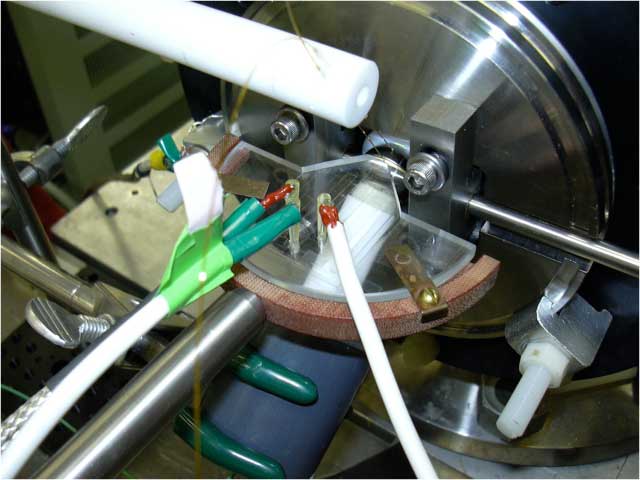H. Musyimi, D.A. Narcisse, X. Zhang, W. Stryjewski, S.A. Soper, K.K. Murray, Online CE-MALDI-TOF MS using a rotating ball interface, Anal. Chem.76 (2004) 5968–5973. doi:10.1021/ac0489723.
Abstract

We report on the construction and performance of a rotating ball interface for online coupling of capillary electrophoresis (CE) to matrix-assisted laser desorption ionization (MALDI) mass spectrometry with a time-of-flight (TOF) mass analyzer. The interface is based on a rotating stainless steel ball that transports samples from atmospheric pressure to the high vacuum of the mass spectrometer for desorption and ionization. The sample is deposited directly from a 50-μm-i.d. separation capillary onto the 19-mm ball that is rotating at 0.03 to 0.3 rpm. The sample is mixed online with matrix flowing from a separate 50-μm-i.d. capillary. The sample deposit dries before it is rotated past a polymer gasket and into the laser ionization region. Cleaning of the interface is accomplished using solvent-saturated felt, which cleans the ball surface after it rotates out of the ionization chamber. On-line CE−MALDI is demonstrated, and the performance is evaluated with the analysis of a mixture of three peptides: [Lsy8] vasopressin, substance P, and neurotensin. The rotating ball interface to MALDI-TOF MS demonstrated mass detection limit in the high femtomole range. The interface has negligible memory effect and shows no significant electrophoretic peak broadening when operated under optimized conditions.




